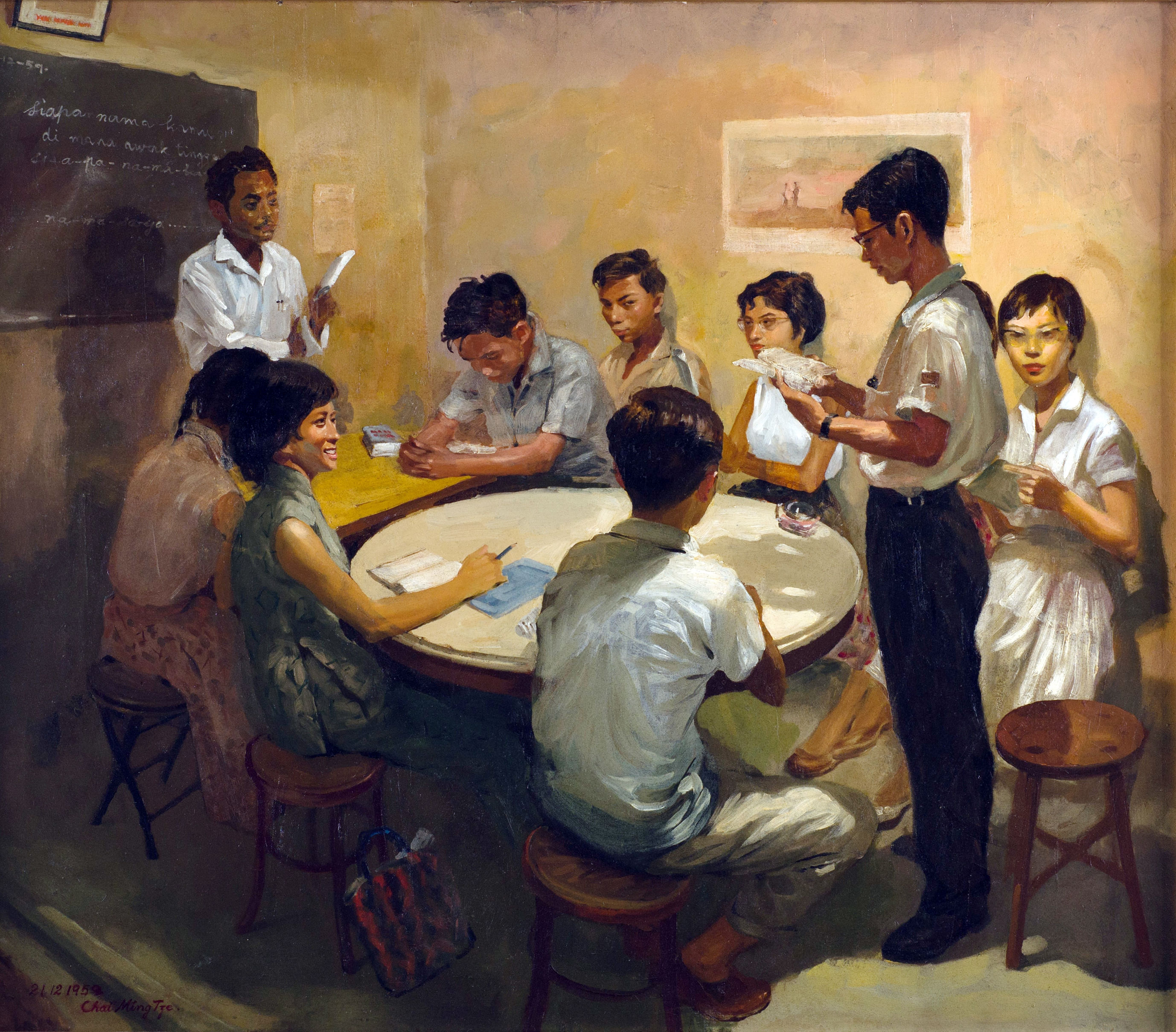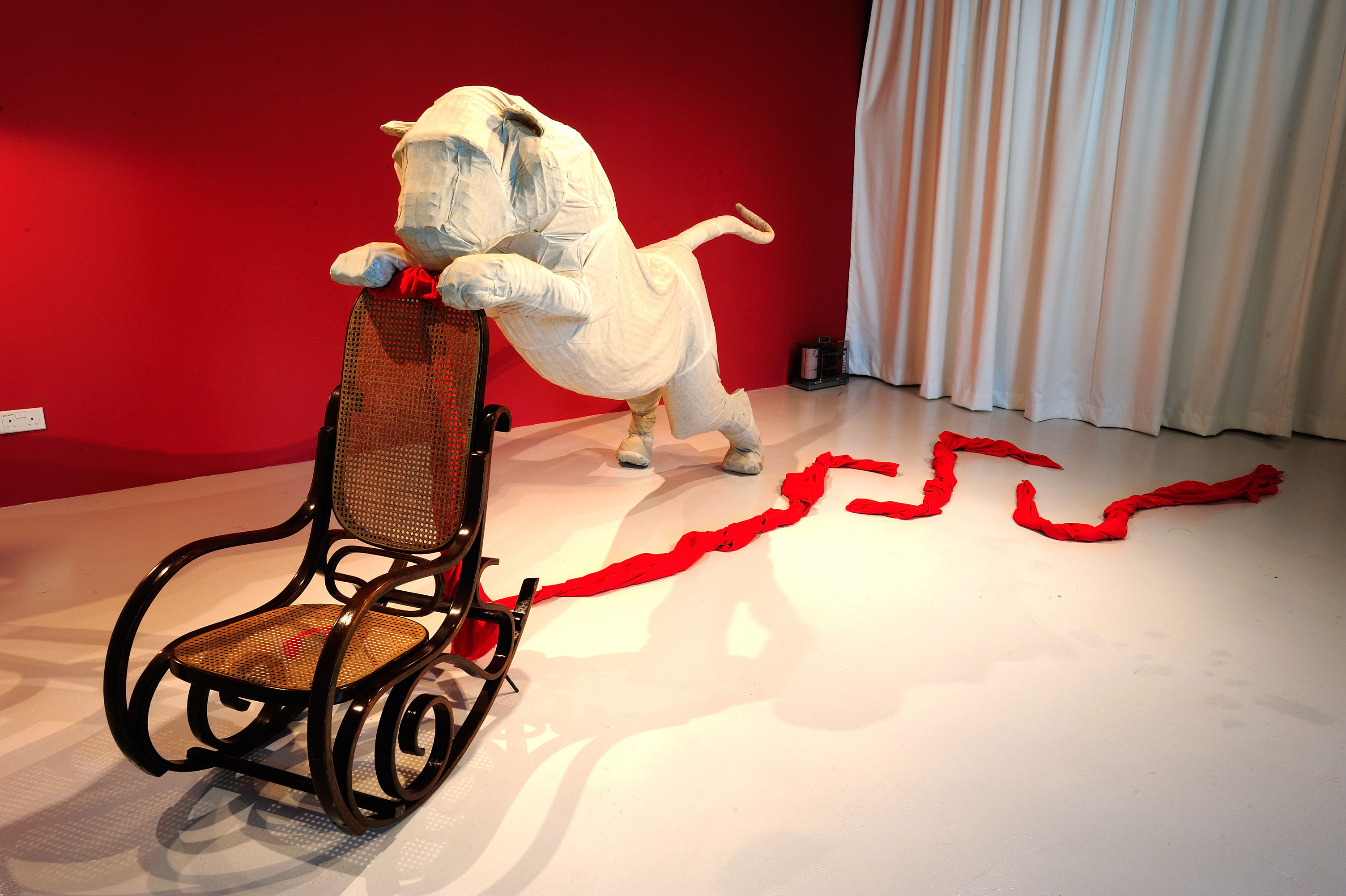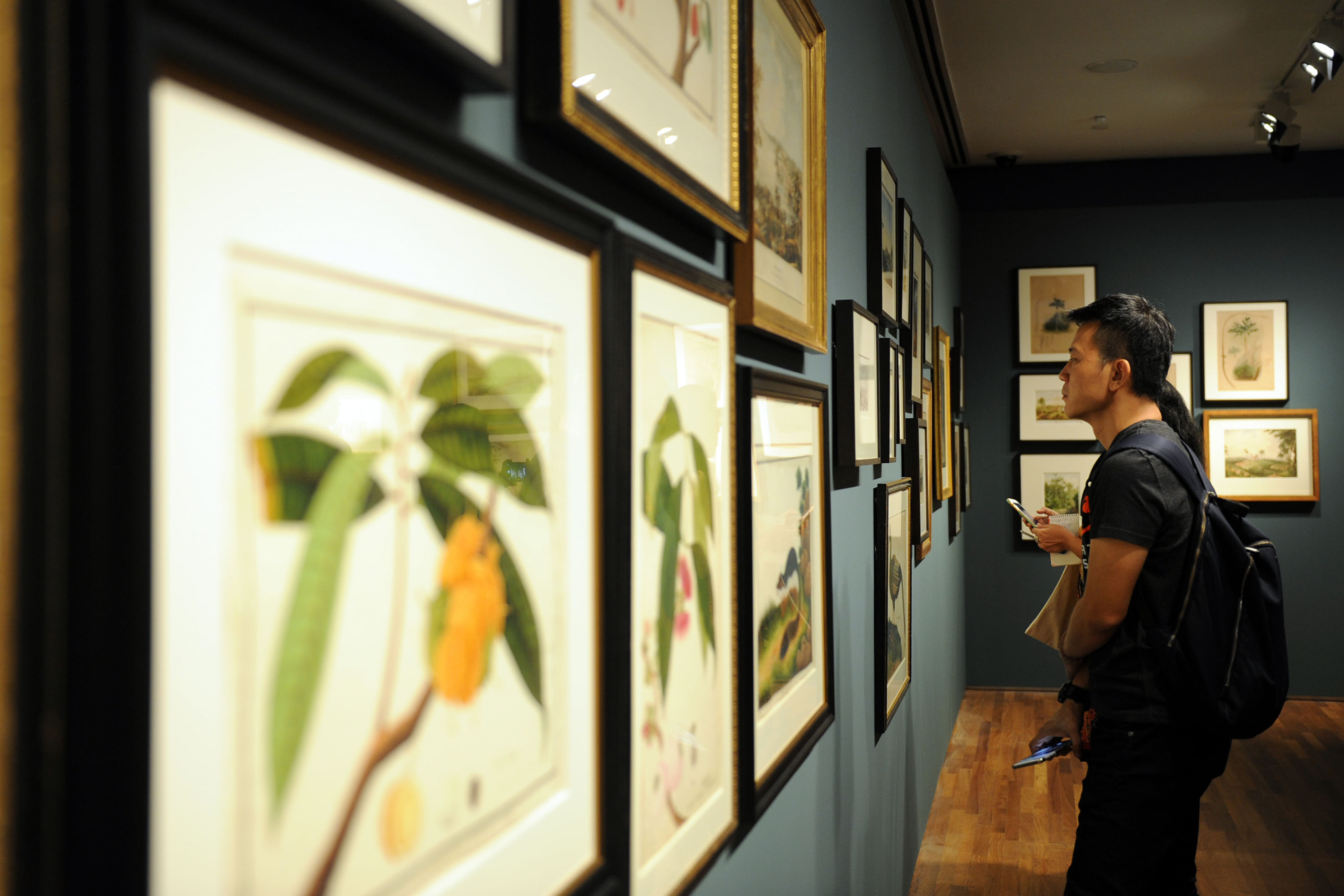Five highlights of Singapore art you should not miss at the National Gallery
Sign up now: Get ST's newsletters delivered to your inbox
Deepika Shetty
Follow topic:
Spread over a sprawling 1,750 sq m and supported by a generous $25 million donation by DBS Bank, the DBS Singapore Gallery will show 400 artworks in a long-term exhibition titled Siapa Nama Kamu? (What Is Your Name?).
Situated on one floor in the City Hall wing, it will open along with the rest of the National Gallery on Nov 24.
The exhibition uses six broad themes - Tropical Tapestry, Nanyang Reverie, Real Concerns, New Languages, Tradition Unfettered and Shifting Grounds - to document significant moments of art history and the forces that have shaped it over nearly two centuries.
Here are some highlights:
1. Portrait Of Lim Loh, 1927

by Xu Beihong
Oil on canvas
Gift of Lim family in memory of Lim Loh
It is the imagined landscape, the flowers that look like daffodils or lilies and the artist's signature that add depth to this important painting. It is both a tribute to Xu Beihong's artistic genius as well as a celebration of one of Singapore's pioneers.
In 1927, the then impoverished artist was living in Singapore and was commissioned to paint portraits of prominent figures. This portrait of Lim Loh is one of the few surviving oil paintings documenting that critical period of Xu's artistic activity. As one of the earliest Chinese artists to be trained in Europe, he was instrumental in using scientific realism and the first-hand observation of nature to rejuvenate Chinese ink painting. This work offers a rare insight into the relationship between Asian artists and Western academic art.
Lim, a pioneer building contractor in the 19th century who built the Victoria Memorial Hall and the old Parliament House, was born in Guangzhou province. He was the father of the famous Singapore wartime hero Lim Bo Seng, killed by the Japanese during World War II for his role in organising the anti-Japanese resistance movement. Lim Bo Seng and the artist had a close friendship.
2. National Language Class, 1959

by Chua Mia Tee
Oil on canvas
This iconic painting depicts a group of Chinese students learning Malay in a Singapore classroom. It was a time when Singapore was preparing for merger with Malaya and nationalistic feelings were running high. Instead of the language of the British colonial masters, Singapore was preparing to use Malay, the new national language. This painting is charged with anti-colonial feelings.
3. Tiger's Whip

by Tang Da Wu
Installation
Created in 1991, this installation is part of a seminal performance by avant-garde artist Tang Da Wu. He had dragged eight life-size papier mache tigers around Chinatown to protest the killing of tigers for their sexual organs, believed to contain aphrodisiacal powers for men. The white tiger represents its ghost, pouncing on the rocking chair that symbolises aged men. The mixed-media piece is among the most representative works of Singapore's contemporary art history.
4. Lotus In A Breeze, 1970

by Georgette Chen
Oil on canvas
Gift of the Lee Foundation
Collection of National Gallery Singapore
Pioneering Singapore female artist Chen enjoyed working outdoors to capture subjects in fleeting light. In her diary, she writes of this work: "For 10 days, the day began for me at 7am and ended at 6pm. Under my painting sun shade, I feasted on these delicate white and pink beauties."
This is a classic example of a Nanyang School artist - the movement started by Chen and her contemporaries - using Western pictorial techniques to depict a distinctly local subject. Chen had a love of the lotus blossom, and often used it as a subject matter in her paintings to indicate her Chinese heritage. At the same time, the strokes and colours in this painting were strongly influenced by the Impressionist painters.
5. Tropical Tapestry

The DBS Singapore Gallery's inaugural long-term exhibition, Siapa Nama Kamu?, captures the broad sweep of Singapore's art histories at defining periods. Tropical Tapestry is one of the six themes presented in the exhibition, focusing on the colonial encounter from the 19th to 20th century. This section features a vivid tropical tapestry of impressions from maps and landscapes to natural history drawings.
deepikas@sph.com.sg

